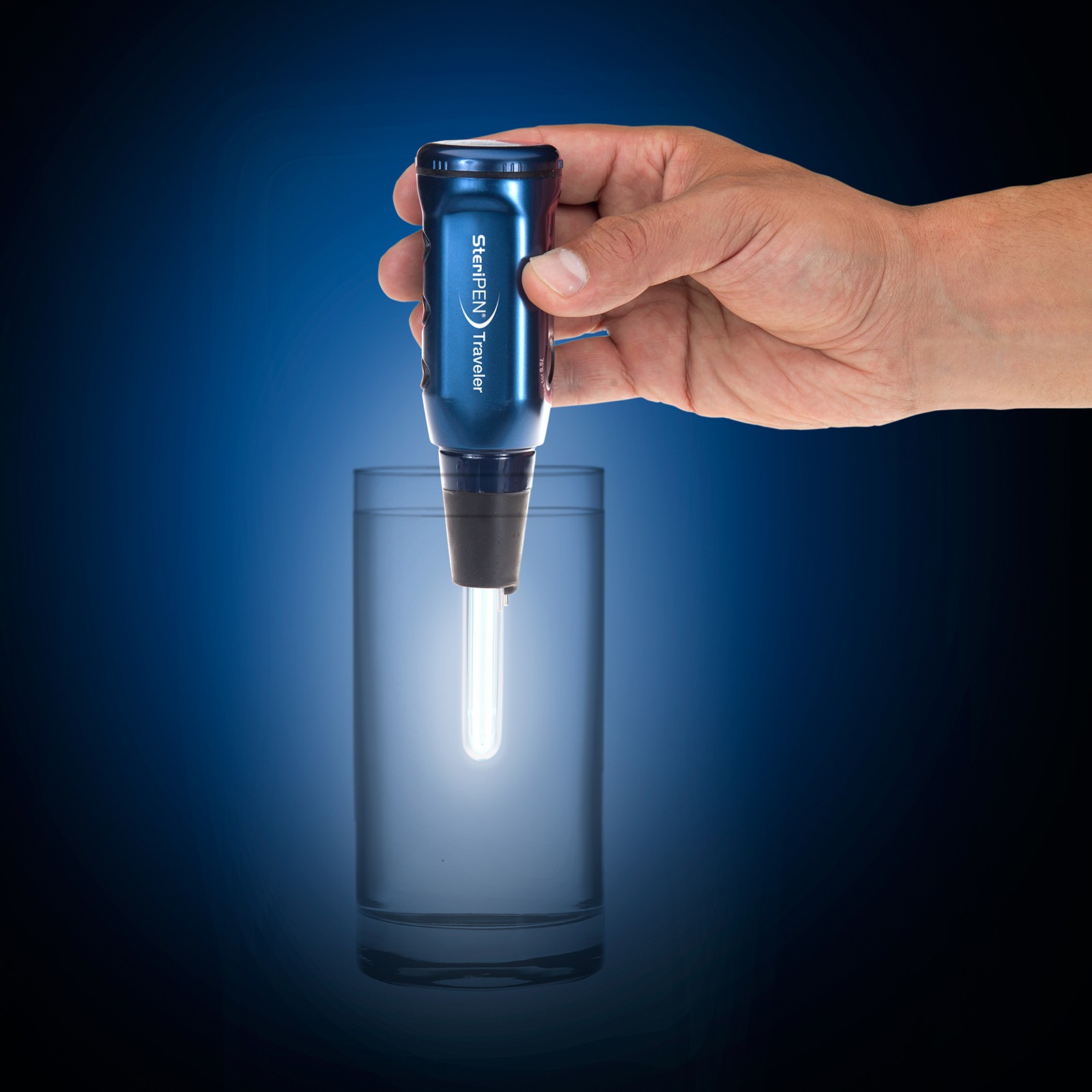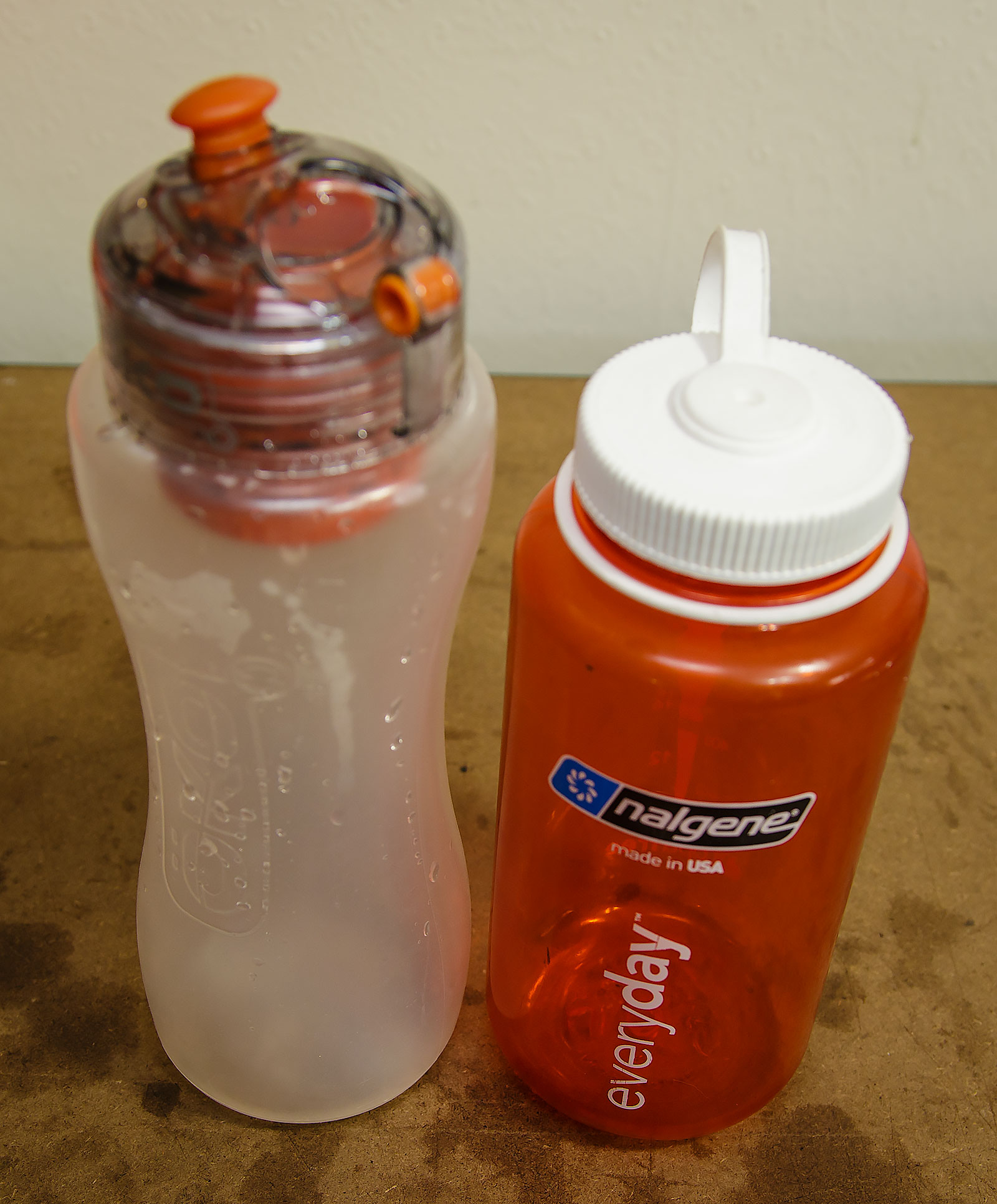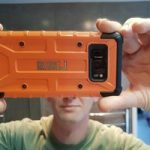The OKO Original Filtration Bottle
Water is one of the key survival priorities – it’s safe to say you will die of thirst long before dying of hunger. Compound that by generally engaging in a high level of exertion while out in the bush and your water requirements increase significantly. Staying hydrated is not only a good idea, but it can also become a matter of life or death.
Calculating our water requirements is critical in the planning stages of any trip. You need to have enough water to drip through the day as well as use for cooking and cleaning in the evenings and mornings. Factoring in extra intake because of the level of exercise – you can be looking at six litres of water per day plus. Considering that’s basically 6kg of dead weight, many people choose to take some water but also fill up along the way. Certainly, the appeal of dehydrated food packs is not having to carry the water weight – it quickly becomes pointless if you are just simply transferring that saved weight into the water in your pack!
We are lucky in NZ that we still have a lot of access to fresh water. During my last trip to the south, one of the things I missed most returning home was the taste of the water straight out of the streams feeding the Copeland River. However, a lot of our streams and rivers are also surrounded by pasture – and the quickest way to introduce bugs and nasties to our waterways? Cattle. If you are anywhere near farmland, you shouldn’t be drinking water straight out of the source. If in doubt. Don’t. Why? Long names like…
Cryptosporidium and Giardia Lamblia
Don’t forget E-Coli. These three are the main bacteria found in water sources. Anyone can ruin your day. Or more correctly, ruin your guts, and ruin them for a long time. I have thankfully never suffered from any of them, and don’t ever intend too.
So, what we need is a simple way of treating any potentially suspicious water.
The traditional method is boiling. Which works if you are at camp, have the billy set up and have a bit of time. But what do you do if you are on the move and don’t want to stop and set up the Jetboil every time you pass by a stream?
The quicker methods available include chemical treatment, UV treatment and filteration.
Chemical Treatment
Chemical Treatment generally involves dropping something like ammonia or chlorine into your water, either in the form of a liquid or tabs, waiting for a bit, then drinking. While on the plus side, chemical methods are a fairly sure way of killing everything in the water they can also leave a taste to the water that ranges from subtle to horrible.
UV Treatment

For a long time, UV treatment has been my favourite. It’s effective, relatively quick and the old raver in me just likes playing with blacklights and water. However, it’s also a weighty solution, goes through batteries and costs more. I will do a bit of a cost comparison between options later
Filteration
Which leaves us with our final option and also brings us back around the product we are reviewing here today.
The OKO Bottle
This bottle incorporates the filter into the neck itself – so operation is as about as simple as it gets – fills the bottle up, close the top on it, sip away at the filtered (and safe) water.
The filter built into the bottle is a 2-micron filter, which wouldn’t normally be considered enough to filter out all the nasties you are going to come across in some water. However, because of the water, the filter is constructed any particles need to pass through a bit of a maze of sorts to get through – effectively reducing the filter size down to the realm of .5 microns.
This handy image gives you an idea of what exactly the filter is getting rid of. Bacteria is gone as well as Viruses and so is Chlorine, Lead and many other things. Realistically, it’s not filtering Arsenic. But if you are drinking water laced with Arsenic, you have other problems already. The filter is easily replaceable, and OKO suggests replacing it every 50 gallons for best taste – though it should be good for up to 100 gallons. That equates (in the 1 litre) to 375 refills. For my use, where it is essential for safety purposes, I will be replacing it roughly every 180 refills. The trick is, of course, to remember how many times you have refilled it. My suggestion – marker pen on the bottle itself. Every ten fills, put on a mark, after 18, replace the filter, start a new record. This will also will make the bottle unmistakably yours.
Comparisons to the existing system
So, the goal for me was to replace the existing system (and it’s weight) with a newer, quicker way of doing things. How does it compare?
Well, put simply, it’s under half the weight. The bottle itself is a little taller, compared to the standard squat and fat Nalgene, so it sits a bit higher in my Mystery Ranch Bottle Pocket – and I will wait and see if that means it’s going to get caught more Bush bashing, however, feels good in the hand and well, is easy enough to drink through? I don’t really know how you rate drinkability…
So, a cost comparison –
The 1 Litre bottle is currently $39.90, with replacement filters being $17.95
A Nalgene costs $29.95, and the Steripen Classic is $139.90 – with the Steripen you are going to need to replace the batteries – which can be rechargeable, though I tend to prefer to use Lithium for things I have to rely on – call it $28 dollars for a pack of four.
Well, the OKO bottle definitely wins there – ease of use, costs less. All around win.
Any downsides?
Well, being blunt, the carabiner that comes with the bottle is rubbish. Cheap inclusion, shouldn’t have bothered, would never use the one on it anyhow and, if you don’t get the top on right, it can leak a little bit – but unscrewing the top then re-screwing it is generally enough to fix the issue.
Other than that, not a lot to fault the bottle on really.
On the whole, it’s a lightweight, simple solution to safe water.





